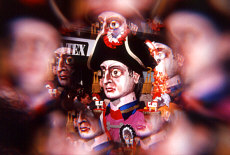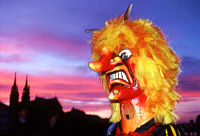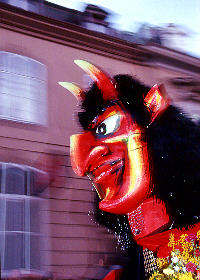| Light Filter usage in the Digital Photography - "Phototips" |  | |
| [Photobook Carnival in Basel] [Photo catalogue] [Photocalendar] [Travelforum] [Travelreports around the world] | ||
| Light Filter usage in the Digital Photography - "Phototips" |  | |
| [Photobook Carnival in Basel] [Photo catalogue] [Photocalendar] [Travelforum] [Travelreports around the world] | ||
 | + |  |
= |  |
| concentric 6-facet prism | Point lens |
 |  |  |  | |
| Concentric 3-facet prism | Concentric 5-facet prism | Linear 3-facet prism | Linear 6-facet prism |
The photoimage gets purposefully underexposed:
3-4 aperture steps for strong effect The longer the exposure time, the greater is the proportion of the foreign light and the smaller the proportion of the flash light. Due to the limited range of the flash unit, the flash works mainly on the foreground of the photo. Targeting like that, a mixed light scenario can be generated:
Soft natural light on the photo background In the flash working range (foreground) ie there is no risk of camera shake. Tip: Not too much stop down (aperture between f 4 and 8), otherwise the power of the flash unit would not be sufficient. By "panning" the camera according to a moving foreground subject a motion blur on the photoimage background may be achieved. Due to the short duration of the flashlight, the foreground subject is sharply drawn and acts in its movement as frozen. |
 Exposure data for the photoimage above: Aperture f 8, shutter speed 1/2 sec Underexposure without fill-in flash is 3 aperture stops Fill-in flashlight Film speed ASA 200 |
 | |
| © made4you |